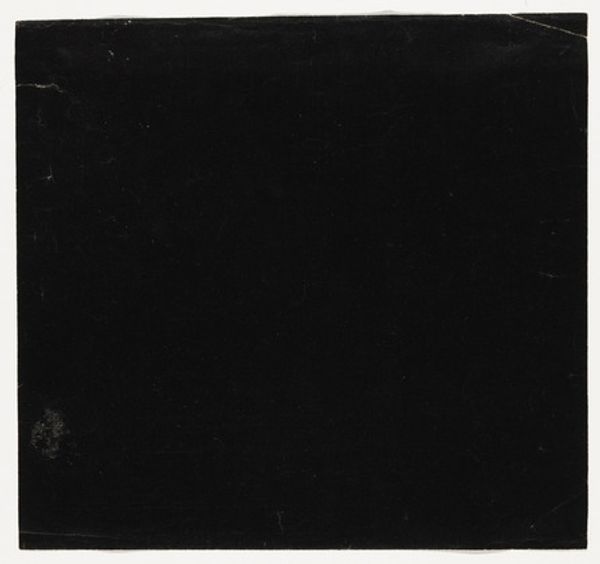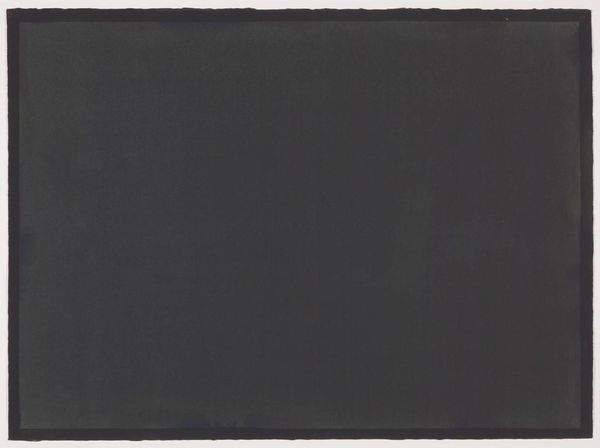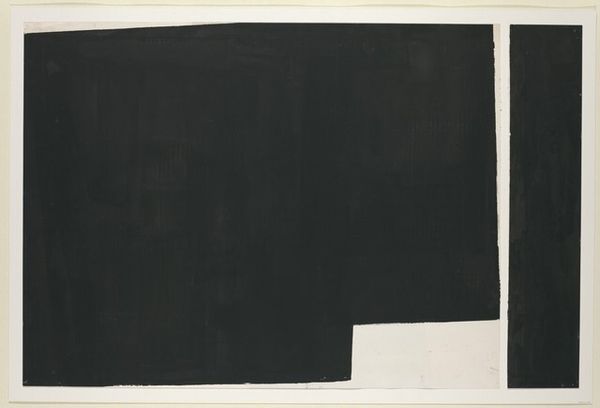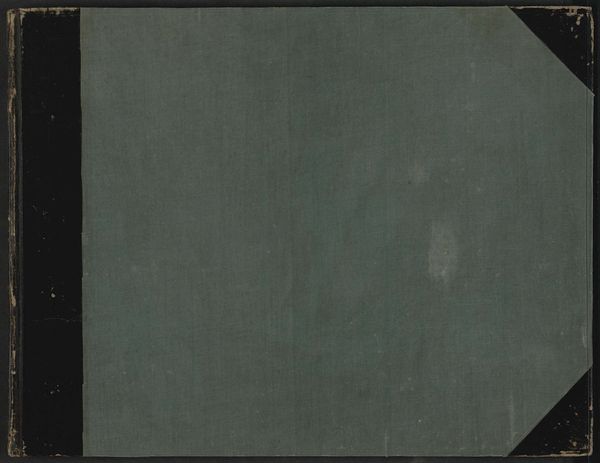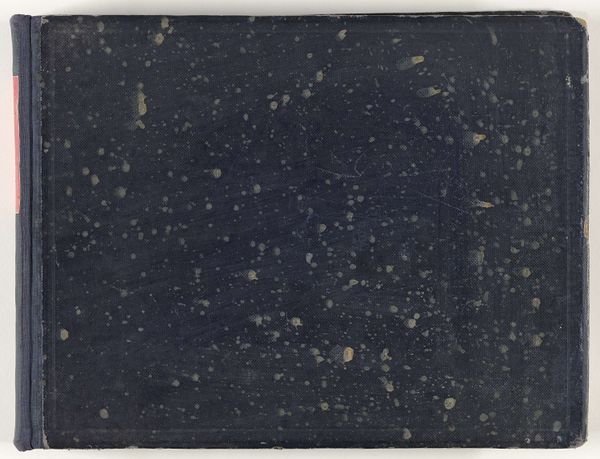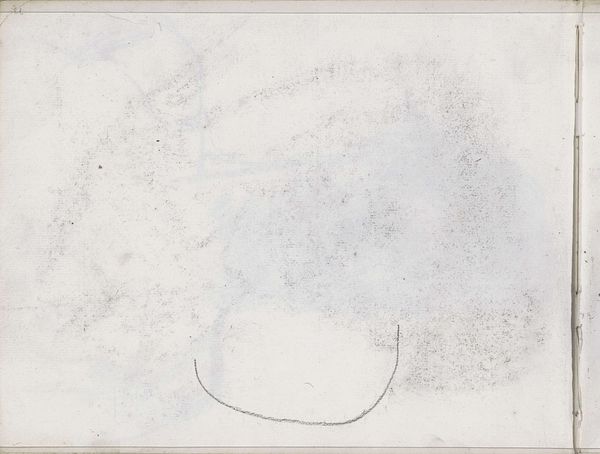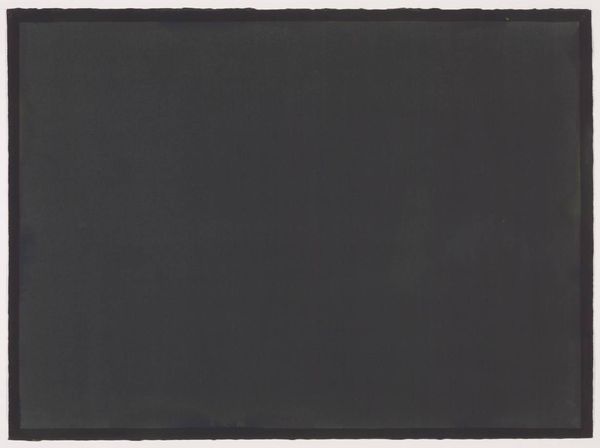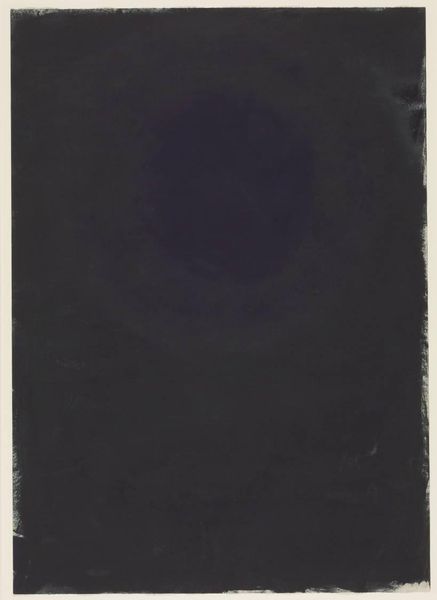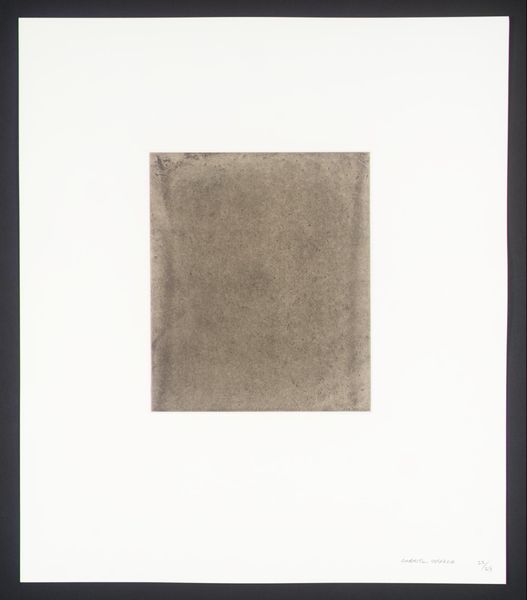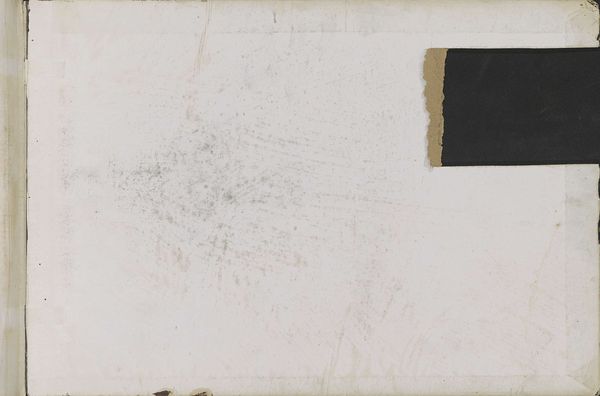
painting, acrylic-paint
#
abstract-expressionism
#
painting
#
circle
#
colour-field-painting
#
acrylic-paint
#
form
#
rectangle
#
geometric
#
abstraction
#
line
#
modernism
#
hard-edge-painting
#
monochrome
Copyright: (c) Ellsworth Kelly, all rights reserved
Editor: Here we have Ellsworth Kelly’s "Black on Black," created in 1951 using acrylic paint. Its monochrome nature is striking; I find it quite imposing. What is your take on this seemingly simple composition? Curator: It's deceptively simple, isn’t it? From a historical perspective, this piece emerged in the wake of abstract expressionism. While figures like Pollock were embracing gesture and chaos, Kelly explored pure form and color, reflecting a post-war desire for order and clarity. The monochrome, the hard-edged painting, the geometry—it’s a direct challenge to the painterly aesthetics dominant at the time. What role do you think the museum plays in ascribing value to a piece like this? Editor: That’s interesting! So, is the institutional framing key to its meaning? It certainly feels very intentional. Curator: Precisely. Think about it: a monochrome painting in a gallery invites viewers to consider its texture, the subtleties of its tone, the very idea of what constitutes a painting. It's a statement about the museum as a space for contemplation and validation, conferring legitimacy to avant-garde practices. What do you notice about how it interacts with the surrounding architecture? Editor: Now that you mention it, I'm beginning to see this isn’t just about aesthetics. It's about the cultural and architectural landscape in which it exists! Curator: Absolutely! And Kelly used abstraction as an experiment. By denying familiar subject matter, he invites you to look at the bare bones of visual experience, questioning our expectations of what art *should* be, and challenging how museums mediate this experience. Editor: I hadn't thought of the social forces that played a part in interpreting a painting that is seemingly devoid of representation. Thanks! Curator: My pleasure. Art reflects and shapes society, and every canvas has many stories to tell!
Comments
No comments
Be the first to comment and join the conversation on the ultimate creative platform.
